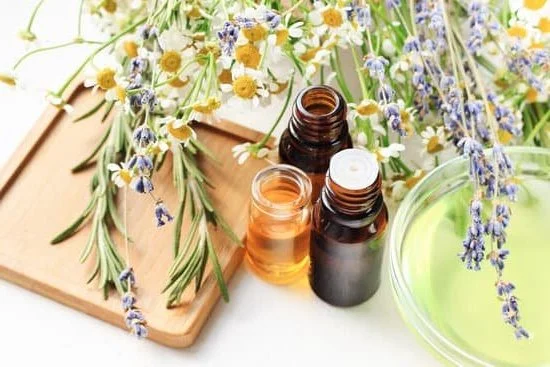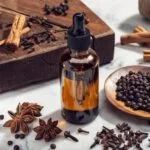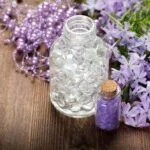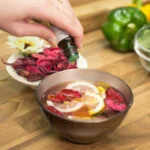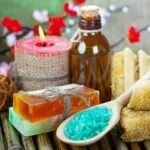Aromatherapy massage combines the healing properties of essential oils with the therapeutic power of touch. This holistic practice has gained popularity for its ability to promote relaxation, relieve stress, and improve overall well-being. Understanding the basics of aromatherapy massage is essential for anyone looking to incorporate this soothing practice into their self-care routine.
At its core, aromatherapy massage involves using essential oils derived from plants to enhance the massage experience. These highly concentrated oils are known for their distinct therapeutic properties, which can range from calming and balancing to uplifting and energizing. When applied during a massage, the oils penetrate the skin and are absorbed into the bloodstream, promoting both physical and emotional healing.
The connection between essential oils and relaxation is profound. The aroma of certain oils can trigger a response in the limbic system-the part of our brain that controls emotions-which can help reduce anxiety, tension, and stress levels. Combined with the soothing touch of a skilled massage therapist or through self-massage techniques at home, aromatherapy massage provides a therapeutic escape from the demands of everyday life.
By learning about different essential oils, understanding how to blend them effectively, and mastering various massage techniques, you can unlock the full potential of aromatherapy massage. In this article, we will guide you through each step of the process-from preparing for a session to creating synergy with complementary enhancements.
Whether you’re seeking relief from muscle soreness or simply want to indulge in some self-care time, mastering aromatherapy massage techniques will elevate your wellness routine and leave you feeling rejuvenated both physically and mentally.
Preparing for an Aromatherapy Massage Session
Before diving into the world of aromatherapy massage, it is important to prepare yourself and your environment to fully immerse in this relaxing experience. By taking the time to set the right ambiance and choose the appropriate essential oils, you can maximize the benefits of your massage session. Here are some essential steps to help you prepare for an aromatherapy massage:
Choosing the Right Essential Oils:
Understanding the Different Types of Essential Oils
There is a wide variety of essential oils available, each with its own unique therapeutic properties. Take some time to research and understand the different types of essential oils so that you can select those that best suit your needs. Lavender is known for its calming effects, while eucalyptus has a refreshing and invigorating scent. You may also consider peppermint for pain relief or chamomile for relaxation.
Selecting Essential Oils Based on Desired Outcomes
Once you have familiarized yourself with different essential oils, think about what specific outcomes or benefits you would like to achieve from your massage session. Are you looking to reduce stress and anxiety? Or perhaps alleviate muscle tension or improve sleep quality? By identifying your desired outcomes, you can choose essential oils that target those areas.
Creating a Calming Ambiance:
Set Up Your Space
Create a peaceful environment by ensuring that your space is clean, clutter-free, and free from distractions. Consider using soft lighting or candles to set a cozy atmosphere.
Choosing Background Music
Music plays an integral role in enhancing relaxation during an aromatherapy massage. Opt for soothing sounds or gentle instrumental melodies that help calm the mind and promote serenity.
Once you have chosen your essential oils and created a tranquil environment, you are ready to embark on your aromatherapy massage journey. Remember to let go of any expectations or pressures and simply surrender to the healing power of touch and scent.
Essential Oils and their Therapeutic Properties
Aromatherapy massage relies heavily on the use of essential oils, as these natural extracts are known for their therapeutic properties. Each essential oil possesses unique benefits and effects that contribute to the overall healing and relaxation experienced during a massage session. Understanding the specific properties of different essential oils can help both masseurs and clients tailor their aromatherapy massage experience to address individual needs and preferences.
There is a wide variety of essential oils commonly used in aromatherapy massage. Some popular examples include lavender, tea tree, eucalyptus, peppermint, and chamomile. These oils can be chosen based on desired outcomes such as stress relief, pain management, relaxation, or rejuvenation. It is important to note that not all essential oils are suitable for everyone. Some individuals may have sensitivities or allergies to certain oils, so it is crucial to perform a patch test before using them for massage.
| Essential Oil | Therapeutic Properties |
|---|---|
| Lavender | Calming, soothing, promotes sleep |
| Tea Tree | Anti-inflammatory, antimicrobial |
| Eucalyptus | Cooling, decongestant, invigorating |
| Peppermint | Pain-relieving, refreshing |
| Chamomile | Relaxing, soothing, aids digestion |
When choosing essential oils for aromatherapy massage, it is important to consider the specific needs and preferences of the client. By selecting the appropriate oils and understanding their therapeutic properties, the massage experience can be customized to promote physical and emotional well-being.
The Art of Blending Essential Oils for Massage
Blending essential oils for massage is an art that requires skill and knowledge. When it comes to aromatherapy massage, creating the perfect blend of essential oils is crucial in achieving the desired therapeutic effects and maximizing relaxation. Here are some expert tips on how to properly blend and dilute essential oils for your massage sessions:
- Know your oils: Familiarize yourself with the therapeutic properties of different essential oils. Each oil has unique benefits and effects on the body and mind. Some examples include lavender for relaxation, peppermint for pain relief, and eucalyptus for respiratory support. Understanding these properties will help you choose the right combination of oils for a specific outcome.
- Dilution guidelines: Essential oils are highly concentrated substances and should never be applied directly to the skin without proper dilution. Use a carrier oil such as sweet almond, jojoba, or coconut oil as a base for your blend. The typical dilution ratio is 2-5 drops of essential oil per tablespoon of carrier oil, but this can vary depending on factors such as age, health conditions, and personal preferences.
- Test before use: Before using a blend on a client or yourself, perform a patch test to check for any potential allergic reactions or sensitivities. Apply a small amount of the diluted blend onto a small area of skin (preferably on the inner arm) and wait 24 hours to see if there are any adverse reactions.
- Consider synergy: Blending multiple essential oils can create powerful synergistic effects, enhancing their individual properties. Experiment with different combinations until you find blends that complement each other well. For example, combining lavender with bergamot creates a calming yet uplifting aroma.
- Keep records: Once you have created a successful blend, make sure to write down the ingredients and ratios used so that you can recreate it in the future or make adjustments if needed.
Here are some popular blends for different massage techniques:
- Relaxation blend: 4 drops lavender, 3 drops chamomile, 2 drops ylang-ylang
- Energizing blend: 3 drops lemon, 3 drops peppermint, 2 drops rosemary
- Muscle relief blend: 4 drops eucalyptus, 3 drops ginger, 2 drops black pepper Remember, blending essential oils is a personal and creative process. Don’t be afraid to experiment and try different combinations to find the perfect blend that suits your needs and preferences.
Techniques and Strokes for Aromatherapy Massage
Aromatherapy massage encompasses a variety of techniques and strokes that contribute to its therapeutic effects. These techniques are designed to enhance relaxation, stimulate blood flow, relieve muscle tension, and promote overall well-being. Whether you are a professional massage therapist or practicing self-massage at home, mastering these techniques can greatly improve the effectiveness of your aromatherapy massage experience.
- Effleurage: This technique involves long, sweeping strokes that glide along the body’s surface, using the palms of the hands and fingers. Effleurage is often used as a warm-up stroke at the beginning of a massage session or as a transition between different areas of the body.
- Petrissage: Petrissage refers to kneading movements that help to release deeper tension in muscles. It involves grasping and gently squeezing the muscles, lifting them away from the bone and alternating pressure with both hands or using one hand while supporting with the other.
- Friction: Friction is a deep tissue technique that involves applying firm pressure with circular or back-and-forth movements over specific areas of tension. This technique helps to break up adhesions in muscle fibers and increase circulation in targeted areas.
- Tapotement: Also known as percussive movements, tapotement involves rhythmic tapping or pounding actions using cupped hands, fingertips, or closed fists. This technique is invigorating and can help to stimulate blood flow and energize tired muscles.
When performing an aromatherapy massage, it is important to remember proper body mechanics and use these techniques in combination with appropriate pressure for each individual’s comfort level. Additionally, pay attention to any feedback from the person receiving the massage regarding their preferences and adjust accordingly.
By mastering these techniques and incorporating essential oils into your massages, you can create a truly transformative experience for yourself or others. The next section will explore safety precautions and contraindications to keep in mind before performing an aromatherapy massage.
Safety Precautions and Contraindications
Precautions for Aromatherapy Massage
Before performing an aromatherapy massage, it is essential to consider certain precautions and contraindications to ensure the safety and well-being of the recipient. While aromatherapy massage can be a beneficial and relaxing experience for most individuals, there are some situations where caution should be exercised.
Pregnancy
One of the critical things to consider is pregnancy. Certain essential oils can stimulate contractions or affect hormone levels, which may pose risks during pregnancy. It is important to consult with a qualified healthcare professional before using any essential oils during pregnancy. They can provide guidance on safe oils and recommended dilutions, taking into account factors such as trimester and any existing medical conditions.
Skin Sensitivities and Allergies
Another precaution is to be mindful of skin sensitivities and allergies. Essential oils are highly concentrated substances, and some individuals may have adverse reactions when applied directly to the skin. It is crucial to perform a patch test on a small area of skin before proceeding with an aromatherapy massage. This test helps identify any sensitivities or allergic reactions that could occur.
If an individual has known allergies or sensitivities to certain plants or botanical extracts, it is essential to avoid using the corresponding essential oils in their massage blends. Instead, alternative oils with similar therapeutic properties can be used safely.
Medical Conditions
Individuals with specific medical conditions should exercise caution when considering an aromatherapy massage. Conditions such as epilepsy, high blood pressure, diabetes, asthma, or other chronic illnesses may require adjustments in the choice of essential oils used or modifications in the massage techniques employed.
It is vital for anyone with pre-existing medical conditions to consult with their healthcare provider or a certified aromatherapist who can provide personalized recommendations based on their individual health situation.
Adverse Reactions and How to Avoid Them
Although aromatherapy massage is generally safe, there is a possibility of adverse reactions if not used properly. It is crucial to take appropriate measures to avoid any unwanted effects during or after the massage session.
Dilution and Sensitization
To prevent skin sensitization or irritation, essential oils should always be adequately diluted in carrier oils before applying them to the skin. The recommended dilution ratio for most adults is usually between 1-3% (approximately 6-18 drops of essential oil per ounce of carrier oil). However, this ratio may vary depending on the specific oil and the individual’s sensitivity levels.
Proper Ventilation
Good ventilation in the massage space is also important. Some individuals may experience headaches, dizziness, or respiratory issues if exposed to high concentrations of essential oils for an extended period. It is necessary to ensure proper airflow in the room during and after the massage.
Observation and Communication
During an aromatherapy massage session, both the practitioner and recipient should pay close attention to any signs of discomfort or adverse reactions. If the recipient experiences nausea, headache, skin redness or rash, difficulty breathing, or any other unusual symptoms, it is crucial to stop the massage immediately.
Communication between the practitioner and recipient is key as well. The recipient should inform the practitioner about any pre-existing conditions, allergies, sensitivities, or concerns before starting the massage session. This open dialogue helps ensure that appropriate adjustments can be made to avoid any potential risks.
By following these safety precautions and considering contraindications appropriately, individuals can enjoy all the benefits that aromatherapy massage has to offer while minimizing any potential risks.
Creating Synergy
In addition to the soothing effects of aromatherapy massage, there are several complementary techniques and products that can enhance the overall experience and maximize its benefits. These enhancements create a synergy that deepens relaxation and promotes a sense of well-being. Here are some suggestions to take your aromatherapy massage to the next level:
- Hot Stones: Adding hot stones to your aromatherapy massage can provide an extra layer of therapeutic warmth and relaxation. The heat from the stones helps to penetrate deeper into the muscles, promoting increased blood circulation and easing tension. The combination of essential oils, expert massage strokes, and warm stones creates a truly immersive and rejuvenating experience.
- Diffusers: Using a diffuser during your aromatherapy massage session can further enhance the ambiance and promote deeper relaxation. By gently dispersing essential oils into the air, diffusers create a calming atmosphere that complements the massage process. Choose essential oils that align with your desired outcomes for the massage session, such as lavender for relaxation or eucalyptus for invigoration.
- Music or Sound Therapy: Consider incorporating music or sound therapy into your aromatherapy massage for a multi-sensory experience. Soft, relaxing music can help calm the mind and enhance the overall sense of tranquility during the massage session. Alternatively, nature sounds or ambient sounds like rainfall can further deepen relaxation and create a serene environment.
These additional enhancements can greatly contribute to the effectiveness of aromatherapy massage by creating a harmonious blend of sensory experiences. Whether it’s through hot stone therapy, diffusing essential oils in the room, or playing soothing music in the background, these elements work together to elevate the overall quality of the massage session. By incorporating these enhancements, you can fully immerse yourself in a holistic wellness ritual that nurtures both body and mind.
| Enhancement | Description |
|---|---|
| Hot Stones | Adding hot stones to the massage to provide warmth and promote relaxation. |
| Diffusers | Using a diffuser to disperse essential oils into the air for a calming ambiance. |
| Music or Sound Therapy | Incorporating soft, relaxing music or nature sounds to deepen relaxation. |
Self-Care and Post-Massage Rituals
After indulging in the restorative experience of an aromatherapy massage, it is crucial to prioritize self-care and allow yourself time to fully absorb the benefits. Self-care practices following a massage can not only enhance the effects of the treatment but also promote overall well-being. Here are some important self-care rituals to consider incorporating into your post-massage routine.
One of the most essential aspects of post-massage self-care is staying hydrated. Massage therapy helps release toxins from your muscles, which can leave you feeling dehydrated. Drinking plenty of water after a massage helps flush out these toxins from your system and prevents any potential discomfort such as headaches or muscle soreness.
Rest and relaxation are vital after a massage session. Take this opportunity to give your body the downtime it deserves by avoiding strenuous activities for at least a few hours following your treatment. Instead, find a quiet and comfortable space to unwind, allowing both your mind and body to enter a state of deep relaxation.
To prolong the calming effects of aromatherapy, consider incorporating essential oils into your daily routine. After a massage, apply a few drops of lavender or chamomile oil on your pulse points or add them to your bath water for a soothing experience. These oils are known for their relaxation properties and can help you maintain a balanced state even after leaving the massage table.
In addition to these self-care rituals, it is beneficial to establish a regular schedule for aromatherapy massages. Consistency with treatments allows you to continuously reap the advantages that aromatherapy offers, both physically and mentally. By making it part of your wellness routine, you can maximize its therapeutic effects and support long-term wellbeing.
By prioritizing self-care and implementing these post-massage rituals into your routine, you can extend the healing benefits of aromatherapy massage beyond just one session. Embrace this time as an opportunity for personal rejuvenation and nourishment, bringing balance and wellness into all aspects of your life. Remember, self-care is not a luxury but an essential element in maintaining a healthy mind and body.
Conclusion
In conclusion, aromatherapy massage is a powerful practice that combines the benefits of both aromatherapy and massage therapy. By incorporating essential oils into the massage experience, individuals can enhance relaxation, reduce stress and anxiety, and promote overall well-being. The therapeutic properties of various essential oils provide targeted benefits, addressing specific concerns such as muscle tension, headache relief, or improved sleep.
To fully embrace the healing power of aromatherapy massage, it is important to prepare for each session thoughtfully. By selecting the right essential oils for the desired outcomes and creating a calming ambiance, individuals can create an immersive and transformative experience. The art of blending essential oils requires knowledge and expertise in combining and diluting oils properly. This careful process ensures that each oil blend is safe and effective for use during the massage.
It is crucial to consider safety precautions and contraindications before performing an aromatherapy massage. Adverse reactions are rare but possible, so it is important to be aware of any allergies or sensitivities that may exist. Additionally, exploring additional enhancements to the massage experience can further elevate its therapeutic effects. Incorporating products such as hot stones or diffusers, along with music or sound therapy, can deepen relaxation and create synergy with aromatherapy massage.
Incorporating self-care practices after an aromatherapy massage is equally important to prolong its benefits. By taking care of oneself through lifestyle changes and integrating essential oils into daily routines, individuals can continue reaping the rewards long after leaving the massage table. It is encouraged for readers to embrace this healing practice in their wellness routine and discover how aromatherapy massage can truly transform their physical, mental, and emotional well-being.
Frequently Asked Questions
How is aromatherapy massage performed?
Aromatherapy massage is a specific type of massage that incorporates the use of essential oils in order to enhance the overall experience and potential benefits. During an aromatherapy massage, the therapist will blend essential oils with a carrier oil and apply it onto the recipient’s skin using various techniques such as gentle strokes, kneading, and circular motions.
The therapist may also incorporate techniques like Swedish or deep tissue massage to further relax the muscles and relieve tension. The combination of the essential oils and massage techniques aims to promote relaxation, reduce stress, alleviate pain, improve circulation, and enhance overall well-being.
How do I start an aromatherapy massage?
To start an aromatherapy massage, it is important to first select appropriate essential oils based on the desired effect or therapeutic benefit you wish to achieve. Common choices include lavender for relaxation, eucalyptus for sinus congestion relief, or citrus scents for an uplifting experience. Dilute your chosen essential oil(s) by blending them with a carrier oil such as sweet almond oil or grapeseed oil.
Once you have prepared your blend, warm it slightly before applying it onto your client’s skin. Begin the massage by applying light pressure and gradually increase it as needed while using different strokes and techniques to address specific areas of tension or discomfort. Remember to communicate with your client throughout the session to ensure their comfort level.
What is the difference between a normal massage and an aromatherapy massage?
The main difference between a normal massage and an aromatherapy massage lies in the incorporation of essential oils into the treatment. While a normal massage focuses primarily on manipulating soft tissues through various techniques and methods, an aromatherapy massage combines these techniques with the use of specially selected essential oils for their therapeutic properties. The added aromatherapy component enhances not only physical relaxation but also provides potential psychological benefits through inhalation of pleasing fragrances that can positively affect mood and emotions.
Additionally, aromatherapy massages may target specific conditions or concerns by selecting appropriate essential oils known for their particular effects, such as reducing anxiety or promoting better sleep. Ultimately, an aromatherapy massage aims to provide a more holistic and personalized experience by combining the benefits of both massage and aromatherapy.

Are you looking for a natural way to improve your health and wellbeing?
If so, aromatherapy may be the answer for you.

